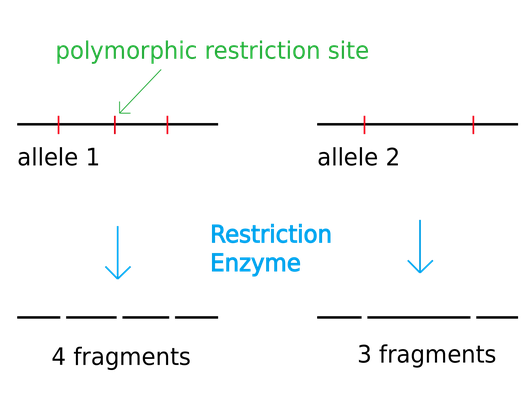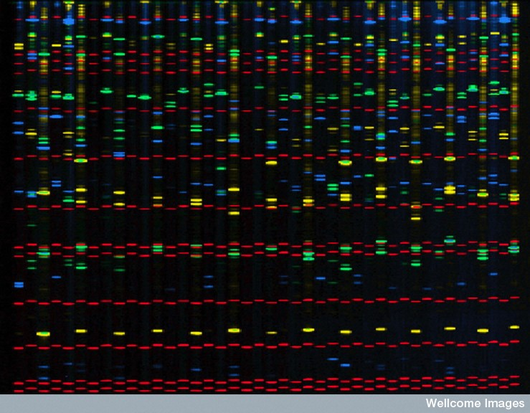Genetic fingerprinting (also called DNA profiling) is the general term applied to a number of processes that provide a limited picture of a person's genotype.
Genetic fingerprinting essentially began thirty years ago with restriction digest, also known as restriction fragment length polymorphism (RFLP), a technique that used a restriction enzyme to chop up a person's DNA into segments at the enzyme's restriction sites. This process made fingerprinting very popular, as it offered a cheap method for applying concrete genetic information to forensics applications and paternity tests. The figure below shows the very basic idea behind RFLP: the lengths of intervals of DNA would be different for individuals having restriction sites at different locations of the genome.

A more advanced technique is to use microsatellites, or "short tandem repeats." These 2-6 bp repeats occur several times in quick succession, with the precise number of times varying between individuals and forming an allele. The figure below contains a DNA profile for 14 different humans; each colored band represents a different microsatellite, with the position of the band indicating just how many times the microsatellite is repeated. Notice that no two individuals have the same set of bands.

In recent years, techniques relying on sequencing limited parts of the genome have started to replace more indirect methods as sequencing costs have plummeted.